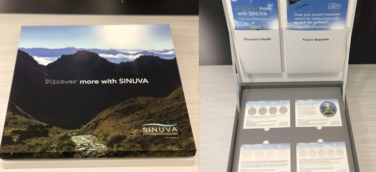Pharmaceutical marketers work hard to bring basic marketing principles to bear in their markets, and anyone who has read my writing or heard my opinions will know that I believe most of that effort is wasted. Our markets aren’t like any others. For the most part, people don’t want to use our products—they must use them. The people who make the decision on what will be purchased are not the ones who will use them, benefit from them, or pay for them, and no other market has a legally sanctioned and effectively enforced generic use imperative. You can’t take Marketing 101 tools and use them effectively in such a market. I learned this the hard way while actually earning a PhD in Pharmaceutical Marketing. My studies demonstrated clearly that what I thought was important was pretty useless.
One of the most basic principles of marketing is branding, something that I believe is almost worthless in our markets. How can I say that? Let’s look at the common definition of it, as provided by the American Marketing Association: “A brand is a customer experience represented by a collection of images and ideas; often, it refers to a symbol such as a name, logo, slogan and design scheme.”
Although many customers (prescribers, payers, consumers and others) will remember the name of the medicine, it is very unlikely that the “customer experience” is in any way represented by the logo or the name. The effects of the drug—and little more—represent that experience. In fact, after patent expiration the brand name won’t even be used to identify it anymore. And patients love it when your brand essentially goes away. Then they pay less to get it.
So, if you accept my premise that the effect of the brand or branding is at best limited, what should a marketer think about when it comes to brand names? My answer: Think about and find brand names that are as simple as possible, easy to remember and even easier to spell and pronounce. I understand that this is almost the opposite from what is actually done. But think about it. To the prescriber and patient, what is likely to be more important, “spell-ability” and “pronounce-ability” or cleverness and creativity? I, for one, would rather people remember how to spell it and how to say the name than appreciate how clever it is to have all those Zs and Vs put together in such an original way.
It’s Distinctive, But Is It Functional?
Looking at the names applied to many medications today leaves me wondering what the team was trying to do—provide a way to get their drug prescribed or create new characters for the Lord of The Rings! Just look at the names of the drugs approved in 2014 (see chart below), perhaps five or six are easily spelled and recalled, but many do sound as much like the names of Orcs, Wizards or Elves as they do medications. Although some may be creative, and I am sure that all are accompanied by stunning graphic renderings, how likely is it that a physician will really appreciate that? The names may be distinctive, but are they functional?
Note that over one third include the letter V, which is found in less than 1% of words in the English language, and the ever-popular letter Z, found in less than 0.05% of our words, is used in over a quarter of the new drug names. These letters may make the name sound cool, but do they help in recall and correct spelling? Unless they help with the clarity, recall or spelling of the name, they are more of a hindrance than any help.
How important is the brand name to a product’s success? To demonstrate the lack of brand equity, consider Zantac, the leading H2 antagonist; it was switched to OTC status after Pepcid, which remains the dominant player in that market (although it was never better than #3 in the prescription market), but the Zantac name didn’t carry over into the OTC market at all (a similar thing happened with Motrin when that mega brand went OTC, it never caught up with the leaders). Prilosec, one of the first real “blockbuster” drugs, had its name changed after it was launched because the FDA thought the original name, Losec, looked so much like Lasix that it might be confusing. All the research into branding got thrown away, but didn’t hurt the product.
Keep It Simple
But Xanax, one of the great brand names for drugs, was originally intended to be used with an NSAID (flurbiprofen). Upjohn, however, applied it to their tranquilizer, alprazolam, when its approval got moved up. Rogaine was a name that was almost forced on the Upjohn drug because the FDA failed to approve the original choice of Regaine. These names neither helped nor hurt the drugs, except perhaps in the case of Xanax because that name was so simple it may have helped the product get a quicker start in the market. So, whether it’s Losec, Prilosec, Incivek, Victrelis or even Gandalf, remember that it’s the medicine that matters so make sure the name can be remembered easily and spelled correctly—even if it’s boring.








